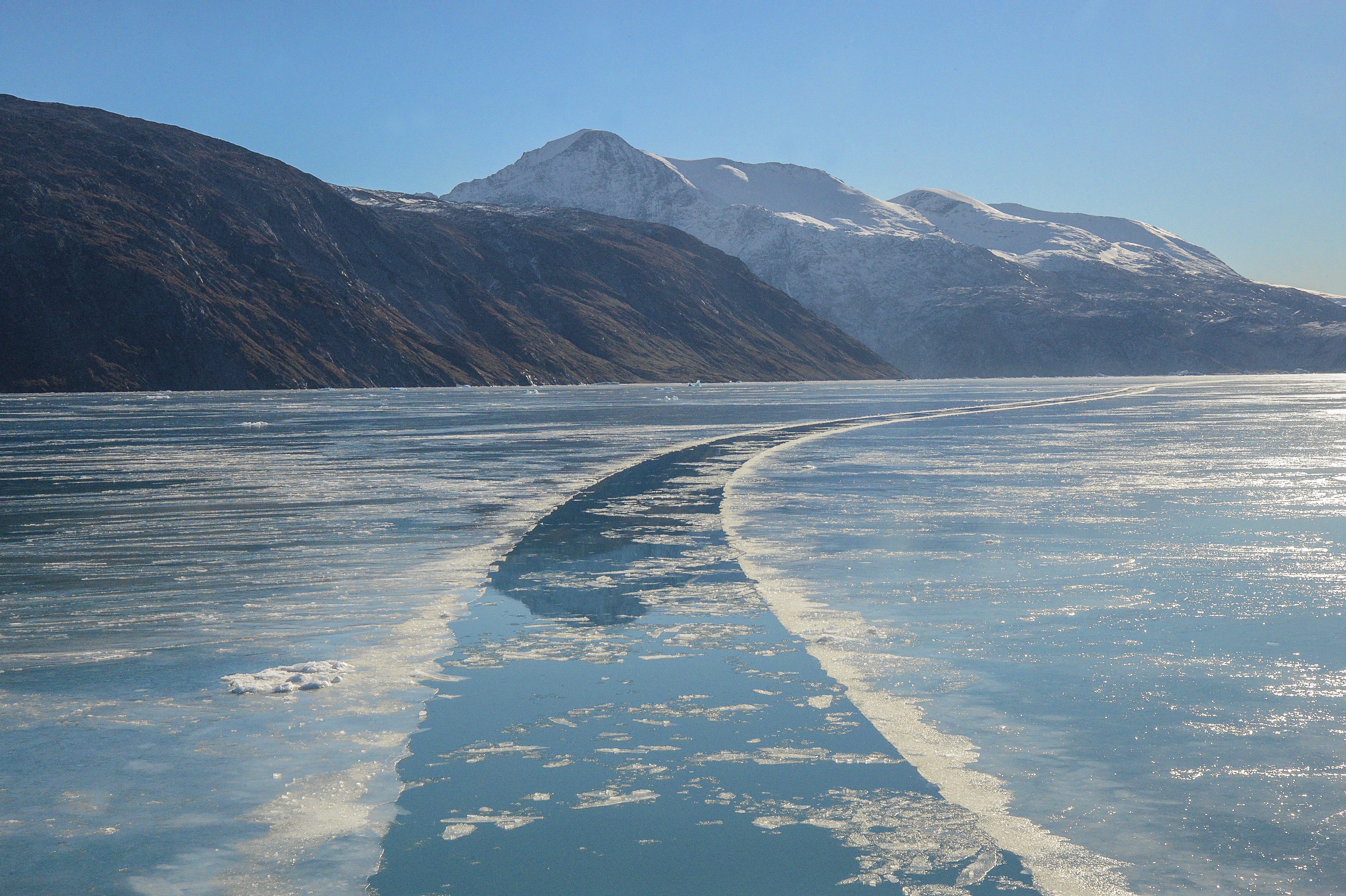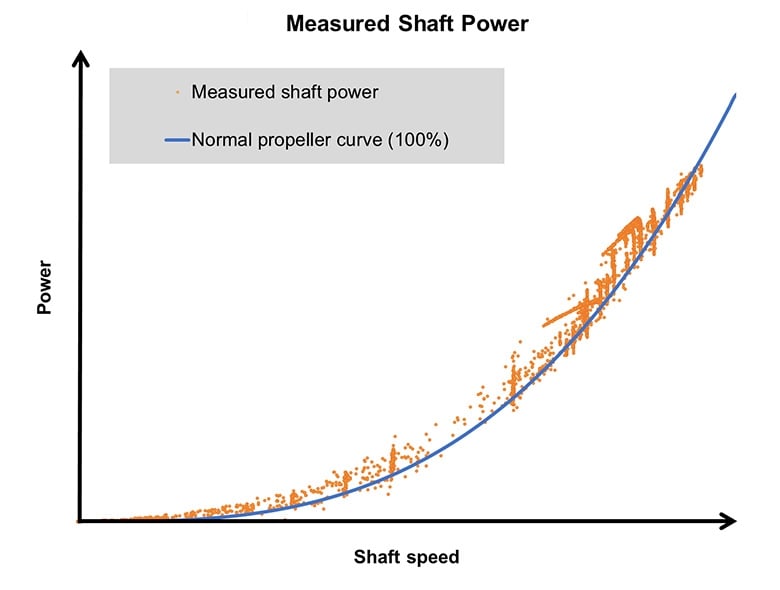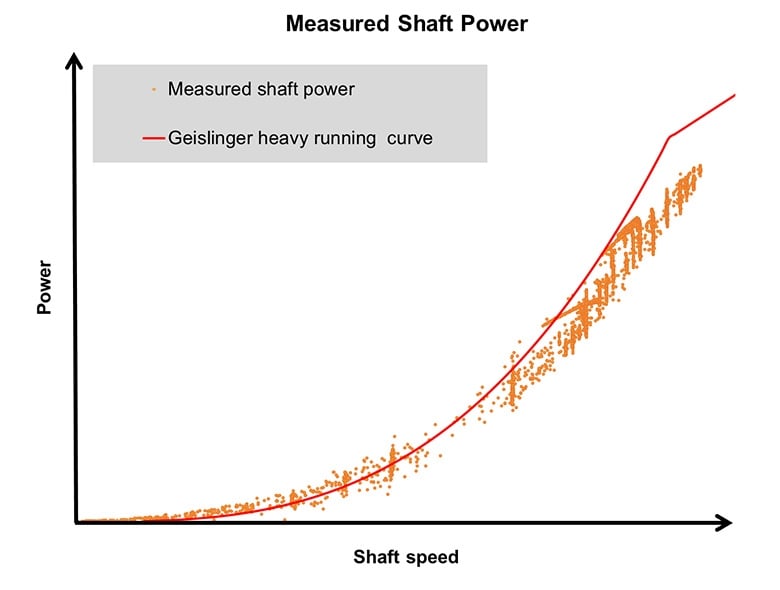SHARE ON:
Link copied!
When sailing in bad weather, ice or shallow water conditions vessels may operate above the normal propeller curve for a longer period of time. This effect intensifies due to the introduction of the energy efficiency design index (EEDI), which results in a trend of longer strokes, lower engine rpm, larger propellers and derating of engine power. From field reports and measurements, the Torsional Vibration Centre at Geislinger has proven that the measured values can be much higher than the normal propeller curve due to special conditions such as, for example, rough seas, shallow waters, and counter currents or drift ice. High rudder angles, too small margins in the engine power for the specific ship hull- or propeller design, ship-hull- or propeller fouling, or specific gravity change in the salt water can also cause such high loads.
The Diagram below shows that heavy running conditions do not only occur for a short time. In order to avoid an overload of the damper, heavy running conditions have to be taken into account during the torsional vibration design phase of the Geislinger couplings and dampers.
The data recorded by the Geislinger Monitoring System (GMS) was evaluated at the Geislinger Torsional Vibration Centre in order to receive additional data on the real load conditions to optimize our dampers further. Based on this, we have developed the Geislinger heavy running curve which takes this real load conditions into account.
Due to the internal GMS data recording, Geislinger specialists could evaluate the load conditions easily and adapt the Geislinger Torsional Vibration Calculation accordingly. Geislinger offers steadily improved dampers which are “built to last” and are prepared to navigate the vessel through icy and stormy waters.
Reference:
Prenninger, Klaus; Lange, Stefan; Richter-Trummer, David: Effects of engine and vessel operating conditions on torsional vibrations dampers, Torsional Vibration Symposium 2017, Salzburg.


